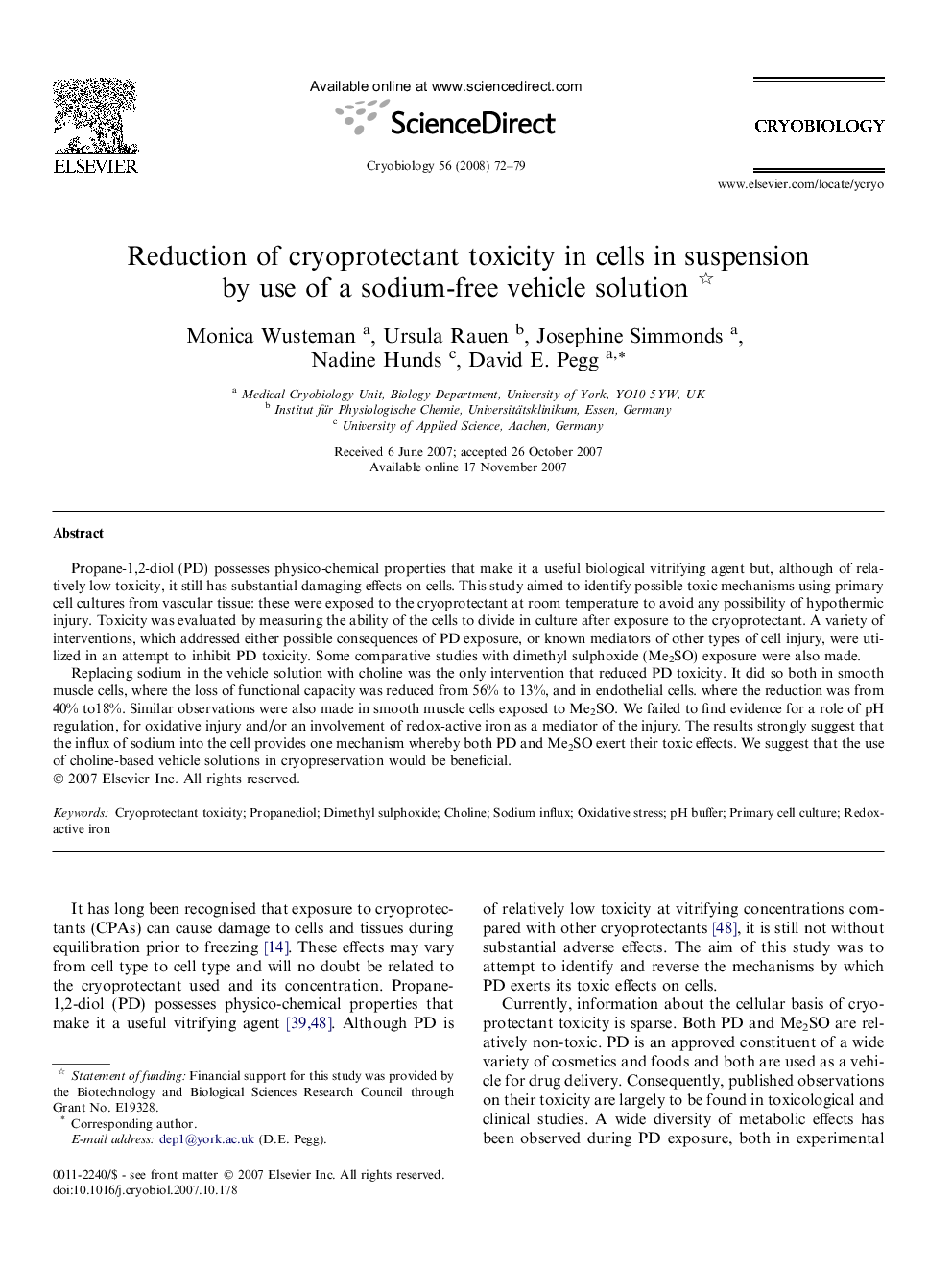| Article ID | Journal | Published Year | Pages | File Type |
|---|---|---|---|---|
| 2169177 | Cryobiology | 2008 | 8 Pages |
Propane-1,2-diol (PD) possesses physico-chemical properties that make it a useful biological vitrifying agent but, although of relatively low toxicity, it still has substantial damaging effects on cells. This study aimed to identify possible toxic mechanisms using primary cell cultures from vascular tissue: these were exposed to the cryoprotectant at room temperature to avoid any possibility of hypothermic injury. Toxicity was evaluated by measuring the ability of the cells to divide in culture after exposure to the cryoprotectant. A variety of interventions, which addressed either possible consequences of PD exposure, or known mediators of other types of cell injury, were utilized in an attempt to inhibit PD toxicity. Some comparative studies with dimethyl sulphoxide (Me2SO) exposure were also made.Replacing sodium in the vehicle solution with choline was the only intervention that reduced PD toxicity. It did so both in smooth muscle cells, where the loss of functional capacity was reduced from 56% to 13%, and in endothelial cells. where the reduction was from 40% to18%. Similar observations were also made in smooth muscle cells exposed to Me2SO. We failed to find evidence for a role of pH regulation, for oxidative injury and/or an involvement of redox-active iron as a mediator of the injury. The results strongly suggest that the influx of sodium into the cell provides one mechanism whereby both PD and Me2SO exert their toxic effects. We suggest that the use of choline-based vehicle solutions in cryopreservation would be beneficial.
